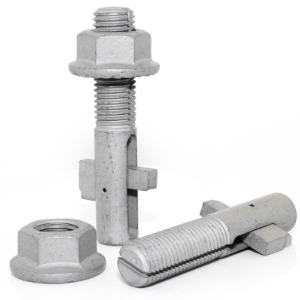Blind Bolts Vs Fang Bolts
Blindbolt NZ | 29th July 2021

Blind Bolts Vs Fang Bolts
Although many different types of fasteners are utilised across a range of industries in a wide variety of ways the basic purpose of all fasteners is the same – to join two or more objects together.
This particular article will examine the design and application of two specific types of fastener – blind bolts and fang bolts.
Blind Bolts Explained
Blind bolts are popular across a range of industries thanks to the fact that they deliver a strong connection and are extremely versatile. They have been developed to operate in circumstances in which the alternatives – such as hex bolts and rivets – would struggle to provide an effective join.
Blind bolts have been utilised as fasteners for several decades now, and provide versatility and flexibility thanks to the sheer number of sizes and designs of blind bolt which are available. The name ‘blind bolts’ derives from the fact that this type of fastener can be applied from just one side of a join via a pre-drilled hole. No access to the other side is needed in order for the join to be completed. This makes blind bolts particularly useful in situations such as bridge construction and connecting girder cavities.
Most blind bolts consist of three components – a steel pin, a collar and a sleeve. Installation takes place using a specific blind bolt tool, which operates in a similar manner to a riveter. Although little training is needed to be able to easily install blind bolts, time and consideration has to be taken when selecting the correct blind bolt for each specific job. Factors which have to be taken into consideration when selecting blind bolts include the tensile strength needed and the corrosion resistance required, although the same is true of other types of structural fastener such as the fang bolt.
Benefits of Using Blind Bolts in The Rail Industry
Blind bolts are one of several types of fastener used within the rail industry. They have become the fastener of choice across the UK rail industry because they provide a reliably high-performance fixing solution when automatic warning system (AWS) units need to be installed onto steel sleepers. Safety is the top priority across the rail industry, and blind bolt fasteners meet the highest possible safety standards.
A previous article on blind bolts and the transportation industry outlined exactly how blind bolts fit AWS units onto steel sleepers as part of the rail construction process. They are utilised in this manner across the UK rail network thanks to the combination of strength, reliability and ease of use which they provide. Using blind bolts enables construction to be carried out quickly and efficiently, and so keeps disruption faced by network operators and their passengers down to the absolute minimum.
What Are Fang Bolts?
Fang bolts are most likely to be used when ironwork needs to be attached to wood. The name refers to the fact that the head of the bolt offers a fanged design which bites into the timber in question. Fang bolts are also called ‘rail anchor bolts’, a reflection of their widespread use across the rail industry. Despite the fact that both fasteners are utilised widely within the rail sector, blind bolts and fang bolts should not be confused.
Benefits of Using Fang Bolts in The Rail Industry
The widespread use of fang bolts within the rail industry derives from the fact that the unique fanged design is perfect when it comes to fixing into the lower surface of a sleeper. Once fixed in place, the entire fang bolt assembly is impervious to movement in any direction, and can cope with the kind of pressure associated with the presence of trains weighing several tons. Fang bolts offer greater reliability than the popular alternatives of spikes and screws, and for this reason they are often placed in high stress positions such as stretches of track featuring sharp twists and turns.
Blind Bolts Vs Fang Bolts
Although both types of bolts are popular across the rail industry, they each have their own specific applications. Blind bolts – as described above – are particularly suited to the installation of AWS units, while fang bolts are ideal for those stretches of track likely to experience maximum vibrations. Despite the different applications, both offer the virtues of strength and reliability, and it is not surprising that they are each in widespread use throughout the rail sector.
Why Wait? Take the Next Step Today
Don’t wait, take the next step today by checking out our guide, ‘What Is A Blind Bolt and What Is It Used For’, by clicking here. Alternatively, you can contact our team by using our quick and easy contact form below. You can get in touch and speak to a member of the BlindBolt team today on 0800 42 52 56 or by emailing us at enquiries@blindbolt.co.nz. We look forward to hearing from you.